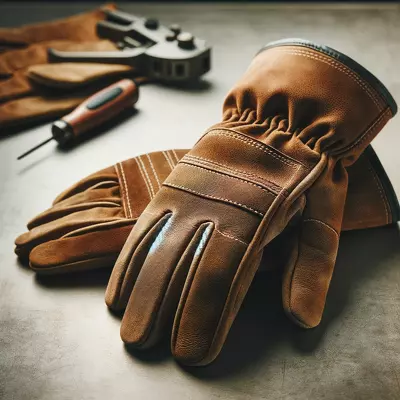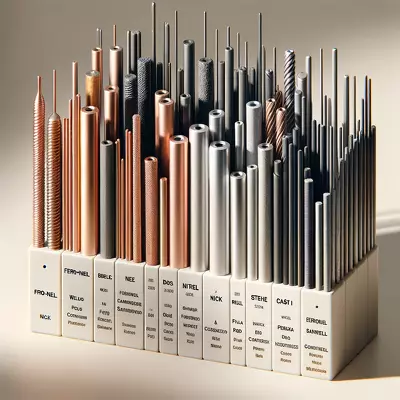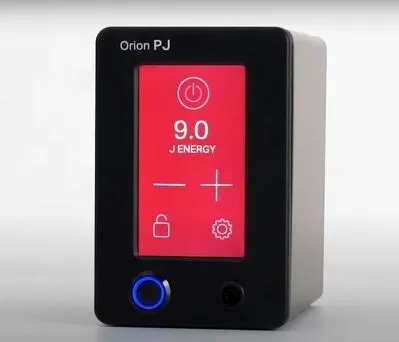Mastering the Arc: A Journey Through the Best Dual Voltage MIG Welder Options

Exploring the world of welding equipment reveals the invaluable versatility of dual-voltage MIG welders. These machines offer the flexibility to operate on both standard household power and higher industrial power sources, making them ideal for a wide range of applications. From professional fabrication shops to home garage projects, dual-voltage MIG welders ensure that enthusiasts and professionals alike can easily achieve high-quality welds on various materials.
As an Amazon Associate, we earn a commission from qualifying purchases.
I. Introduction to Dual Voltage MIG Welders
A. The versatility and utility of dual voltage MIG welders
Dual voltage MIG welders have revolutionized the welding industry, offering unprecedented versatility and utility. These machines can operate on both 110V and 220V power supplies, allowing welders to work in a variety of settings without the need for different equipment. This adaptability makes them an essential tool for both professional and hobbyist welders, enabling high-quality welding on a range of materials.
B. Importance for both professional and hobbyist welders
For professionals, the ability to switch between voltages means being able to undertake projects of different scales with ease, from small repairs to large industrial fabrications. Hobbyists benefit from the convenience of using their existing home power outlets while still achieving professional-grade results. This dual capability ensures that regardless of the project’s scope, the quality of the weld remains consistent.
C. Overview of key features to consider
When selecting a dual voltage MIG welder, several key features stand out. These include the welder’s amperage range, which determines the thickness of materials that can be welded, the type of wire feed system, which affects the smoothness and consistency of the weld, and the machine’s overall ease of use, including setup, interface, and portability.
II. Advantages of Using Dual Voltage MIG Welders
A. Flexibility in welding environments
The primary advantage of dual voltage MIG welders is their flexibility. Welders are not constrained by the availability of a certain type of power supply, making it possible to work in various environments, from workshops to on-site repairs where power options may differ.
B. Capability to weld various materials
These welders are designed to handle a wide range of materials, including mild steel, stainless steel, aluminum, and more. This capability is facilitated by the adjustable power settings, which can be fine-tuned to match the specific requirements of each material, ensuring strong, durable welds.
C. Convenience for both small and large projects
Dual voltage MIG welders cater to both small and large projects with equal efficiency. Their compact design and ease of setup make them ideal for quick repairs and small jobs, while their robust power output and advanced features allow for tackling larger, more demanding projects.
III. Review of Top Dual Voltage MIG Welders
A. AZZUNO 200A MIG Welder
- Key Features and Specifications
The AZZUNO 200A MIG Welder stands out with its 110V/220V dual voltage capability and a versatile 4-in-1 design that supports flux MIG, solid wire, lift TIG, and stick ARC welding. This grey-colored machine offers a robust 200A output, catering to a wide array of welding tasks. - Pros and Cons based on customer reviews
Customers praise the AZZUNO for its exceptional versatility and ease of use, highlighting its effectiveness across various welding methods. The welder’s reliability and smooth operation have also been commended. Some users noted the initial setup could be challenging for beginners, but overall satisfaction remains high. - Ideal Use Cases
This welder is perfect for both hobbyists and professionals looking for a versatile, all-in-one solution for a wide range of welding tasks, from auto repairs to metal art projects.
B. S7 200Amp MIG Welder
- Key Features and Specifications
The S7 200Amp MIG Welder offers a multiprocess welding capability, including gas/gasless MIG welding, lift TIG, and stick ARC welding. Its dual voltage support allows for flexible use across different settings, enhanced by a powerful 200Amp output for comprehensive welding applications. - Pros and Cons based on customer reviews
Reviewers appreciate the S7 for its adaptability and performance in various welding modes. The machine’s durability and user-friendly interface have made it a favorite among both novices and experienced welders. Some feedback mentioned the need for clearer instructions for first-time users. - Ideal Use Cases
Ideal for those requiring a reliable, multi-functional welder that can easily switch between projects and materials, making it suitable for everything from home DIY to more complex industrial tasks.
C. YESWELDER Digital MIG-205DS MIG Welder
- Key Features and Specifications
The YESWELDER Digital MIG-205DS stands out with its digital interface and comprehensive 3-in-1 functionality, supporting MIG, lift TIG, and ARC welding processes. It features a 200Amp output and compatibility with both 110V and 220V inputs, including spool gun support for welding aluminum. Find the review of the YESWELDER MIG-205DS here. - Pros and Cons based on customer reviews
Customers have lauded the YESWELDER for its precision and ease of use, particularly highlighting the digital controls that simplify the setup and welding process. They have also praised the versatility and performance of aluminum. Some users desired more detailed guidance for the machine’s advanced features. - Ideal Use Cases
This welder is perfect for users seeking advanced control and versatility, especially in automotive work, fabrication, and creative metal projects requiring precision and a wide range of welding capabilities.
IV. How to Choose the Best Dual Voltage MIG Welder
A. Assessing welding needs and material types
Choosing the best dual voltage MIG welder starts with a clear understanding of the materials you plan to weld and the projects you undertake. Consider the thickness of the materials and the precision required for your work.
B. Importance of ease of use and setup
For many users, especially those new to welding, the ease of setup and use is crucial. Look for welders with intuitive interfaces, clear instructions, and features that simplify the welding process, like adjustable wire feed speed and voltage control.
C. Considering durability and brand reputation
Durability and reliability are key, as a welder is an investment in your crafting, repair capabilities, or business. Research brands with a solid reputation for quality and customer service, and consider models known for their longevity and consistent performance.
V. FAQs
Q: What is a dual voltage MIG welder?
A: A dual-voltage MIG welder is a machine that can operate on both standard household power (110V) and industrial power (220V), offering flexibility for various welding tasks.
Q: Why would I need a dual-voltage MIG welder?
A: Dual voltage MIG welders are ideal for those who need the flexibility to weld in different locations with varying power supplies or who work on a variety of projects requiring different power settings.
Q: Can dual voltage MIG welders weld aluminum?
A: Yes, many dual voltage MIG welders can weld aluminum, especially those equipped with a spool gun or suitable for TIG welding, which is often used for aluminum welding tasks.
Q: Are dual voltage MIG welders portable?
A: Yes, dual voltage MIG welders are designed with portability in mind, allowing welders to easily transport them between different work sites or areas within a workshop.
Q: What should I look for when choosing a dual-voltage MIG welder?
A: When choosing a dual voltage MIG welder, consider the machine’s amperage range, wire feed system, ease of use, portability, and the types of materials you plan to weld.
Q: Can I use a dual-voltage MIG welder for professional projects?
A: Dual voltage MIG welders are absolutely suitable for both professional and hobbyist projects, offering the versatility and power needed for a wide range of welding tasks.
Q: What is the difference between 110V and 220V settings on a MIG welder?
A: The 110V setting is typically used for lighter, smaller-scale welding tasks, while the 220V setting offers more power for welding thicker materials or for more intensive, professional-grade projects.
Q: Can I use a 220V MIG welder at home?
A: Yes, if your home has a 220V power outlet, you can use a 220V MIG welder. However, many users prefer dual-voltage welders because they can also be used with standard 110V outlets.
Q: Is the Lincoln 140 MIG welder dual voltage?
A: The Lincoln 140 MIG welder is a popular model known for its reliability and performance. While it offers excellent welding capabilities, it is specifically designed for use with a 120V power supply and does not feature dual voltage capability.
VI. Conclusion
A. Best Offer
After reviewing customer feedback and evaluating the features of each model, the YESWELDER Digital MIG-205DS MIG Welder emerges as the top recommendation. Its digital interface, precision, and versatility across a range of welding processes make it the best offer for most welding needs.
B. The Alternative
For those looking for an alternative, the AZZUNO 200A MIG Welder provides a robust option with its 4-in-1 welding capabilities and positive user reviews, making it an excellent choice for varied welding projects.
VII. Suggested Readings
The welding world is vast, and continuing education is key to mastering this skill. Here are a few recommended readings:
- “Welding For Dummies” by Steven Robert Farnsworth: A comprehensive guide for beginners, offering clear explanations of welding techniques and safety practices.
- “The Welding Business Owner’s Hand Book” by David Zielinski: Focuses on how to start and run a successful welding business, covering everything from acquiring new clients to managing projects.
- “Metal Fabrication Technology” by Serope Kalpakjian: Provides an in-depth look at metal fabrication techniques, including welding, and is suited for both students and professionals in the field.
- “Modern Welding Technology” by Howard B. Cary: This book delves into the latest advancements in welding technology, offering valuable insights for advancing your welding skills.
Welding is both an art and a science, requiring a blend of technical knowledge, practical skills, and creativity. The suggested readings offer a wealth of information to enhance your understanding and proficiency in welding, serving as a valuable resource for both beginners and seasoned professionals.
Whether you’re looking to refine your techniques, explore new welding methods, or venture into the business side of welding, these books provide essential guidance and inspiration for your journey.





